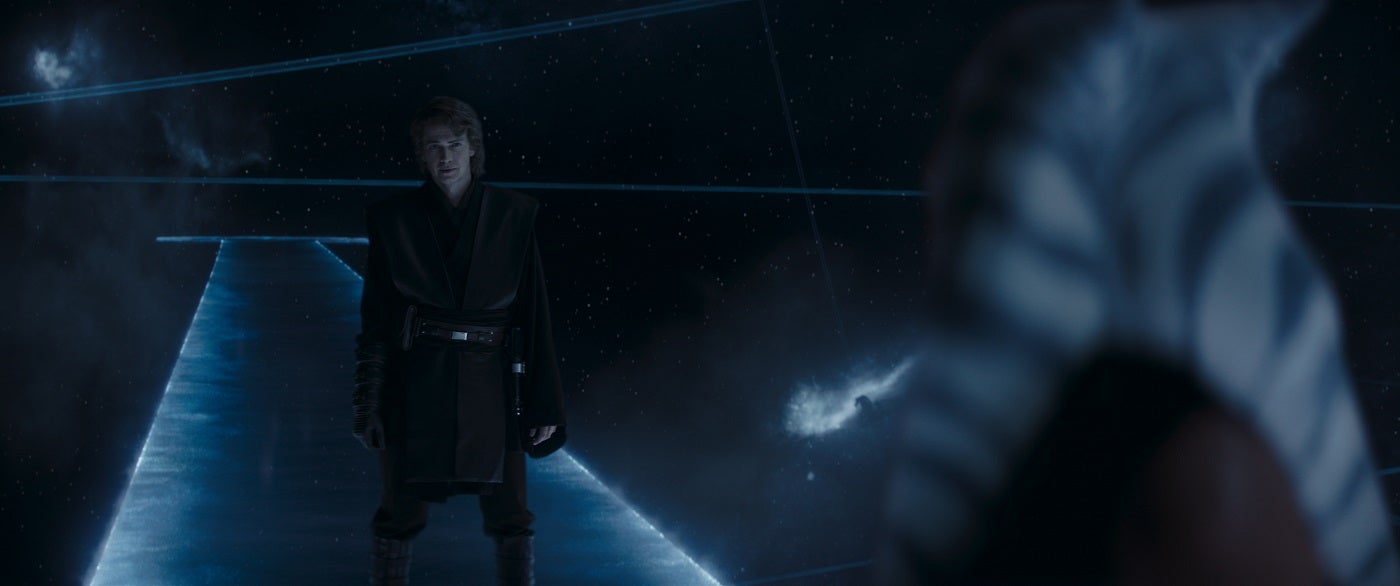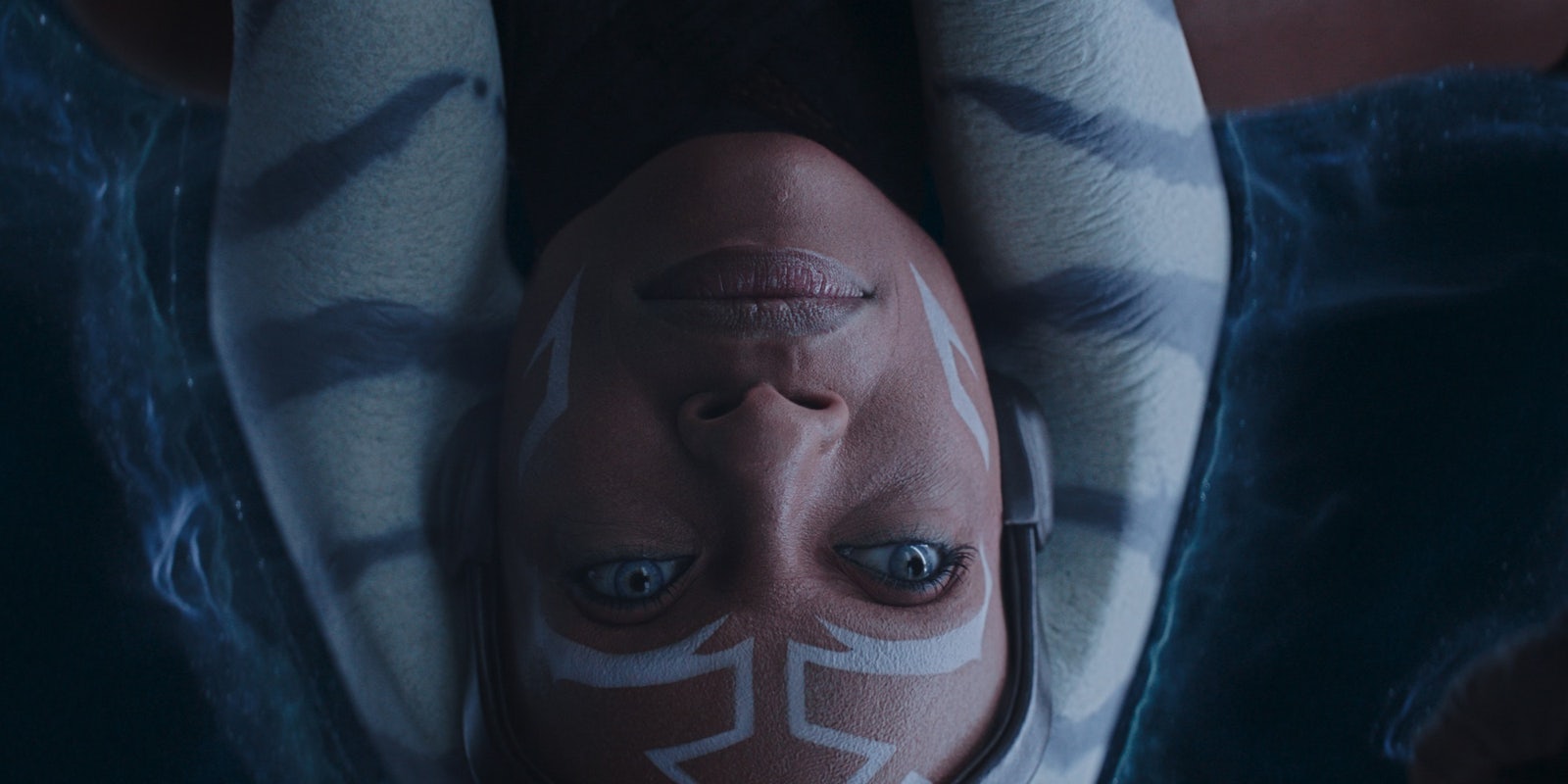This post includes spoilers for Ahsoka episode 5.
Ahsoka’s much-hyped fifth episode is easily the show’s best, resurrecting Anakin Skywalker for an extended flashback/Force-vision sequence.
It’s a satisfying comeback for any Hayden Christensen diehards in the audience, giving Anakin a more balanced role than the Prequel Trilogy. However, it’s also a transparent rehash of The Clone Wars, with showrunner Dave Filoni using Ahsoka as a vehicle to replay old hits.
Star Wars prequel nostalgia is a tricky thing. At best, those movies are a mixed bag. For every good point (cool lightsaber choreography; gorgeous costumes), we have to accept bouts of wooden acting, cringey dialogue, racist aliens, and janky VFX. Not to mention the credulity-straining nature of Padme and Anakin’s romance. Yet the prequels also offer a wealth of fruitful worldbuilding, from George Lucas’ post-9/11 depiction of the corrupt and warmongering senate to the subtextual critique of Jedi dogma.
Twenty years on, fans have learned to love the Prequel era – in part thanks to a plethora of spinoffs correcting the films’ flaws. The Clone Wars is the most popular example, portraying Anakin as a likable hero instead of a petulant asshole.
We return to this era in Ahsoka episode 5, and (partly thanks to some strategically-placed battlefield smoke) it’s more convincing than our robotic first impression of Christensen’s de-aged Anakin last week. Ariana Greenblatt anchors the sequence as an emotive young Ahsoka, reprising Clone Wars memories for a final lesson with Anakin’s ghost.
Yet Greenblatt’s engaging performance highlights two persistent issues with the show: The gulf between old and young Ahsoka, and Filoni’s reliance on old material. Because really, what does this flashback sequence actually do?
The hollow center of Ahsoka and Anakin’s reunion
There’s an obvious appeal to seeing a live-action version of the Anakin/Ahsoka dynamic. But Anakin’s “lesson” is so wishy-washy – and Rosario Dawson’s Ahsoka is such a bland cipher – that it’s hard to swallow their reunion as a pivotal breakthrough. It feels more like an excuse to recreate some generic Clone Wars vibes, regrettably hampered by logistical issues like Christensen’s age.

To circumvent the Uncanny Valley elements of the de-aging process, the battlefield flashbacks film Anakin at a distance. Coupled with the poorly-lit panoramas and unreal backdrops of the Volume, this atmosphere plays into the idea of Anakin as a ghost lurking just outside of Ahsoka’s reach. Less charitably, it destroys the emotional engagement you’d find in more naturalistic conversations and close-up shots.
In the same way that Christensen’s Prequel Trilogy performance was hamstrung by poor direction and dated VFX, his comeback is sabotaged by its own format.
Ahsoka episode 5 primarily functions as a nostalgia trigger, reminding fans of similar stuff they enjoyed elsewhere. It also embodies the defining problem of Ahsoka’s role as a Clone Wars/Rebels continuation: The belief that live-action is somehow more “real” than animation, as if a live-action spinoff somehow validates the seven seasons of animation that fans already loved. Content to rest on his Clone Wars laurels, Filoni embraces shallow fanservice once again, leaning into nostalgia instead of telling a new story.



